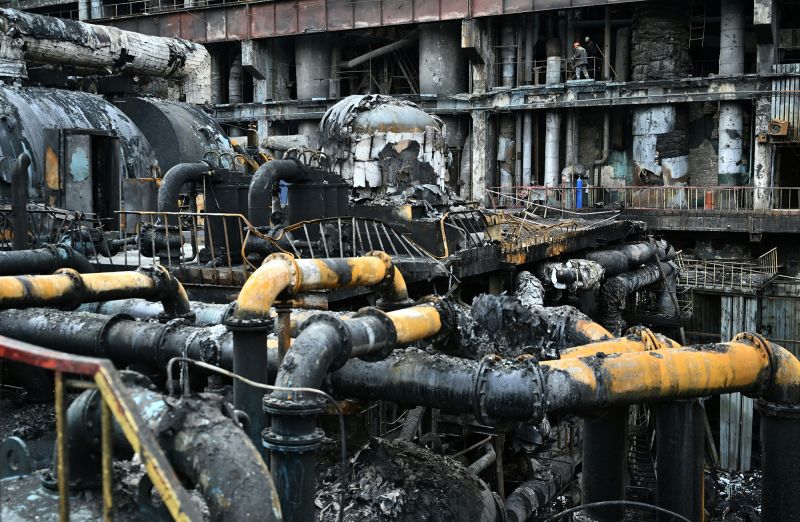The Ukrainian energy sector, a fundamental pillar of the country’s economy, is once again on the brink of uncertainty. As the war of attrition with Russia looms into its third winter, the resilience and adaptability of this key industry is expected to face its ‘sternest test yet’.
Ukraine, which was once touted as an energy hub of Europe, today stands precariously on the edge of an energy crisis. The unnerving reality stems from many factors—a depreciating economy, the omnipresent shadow of war, the annexation of Crimea, and most urgently, the pressing season of winter. The frigid cold season puts an escalating demand on energy, especially natural gas for heating, thereby exposing the vulnerabilities of an already strained energy sector.
First, it’s vital to understand the magnitude of Ukraine’s energy dependencies. The country, having significant reserves of natural gas, has traditionally been reliant on it for a major share of its energy requirements. However, these reserves have not been exploited optimally, owing to regulatory restrictions, conflicts and infrastructure lapses, forcing Ukraine to rely heavily on imports — primarily from its adversary, Russia. The on-going war has further fuelled this crisis, with Russia’s Gazprom cutting gas supplies to Ukraine intermittently since the start of the conflict.
Restrictions on Russian gas have led Ukraine to strive for energy independence. Urgent reforms were undertaken to diversify energy sources and increase domestic production of natural gas. The country also sought gas from other sources, leading to new agreements with European Union countries, boosting reverse-flow capacities and increasing storage volumes. Despite these commendable attempts, achieving a complete transformation away from Russian gas has been an uphill task.
Another major challenge lies in the coal sector. Much of Ukraine’s anthracite coal—a key component for power generation—was mined in the Donbass region, a territory now controlled by pro-Russian separatists. The resulting shortfall in coal supply exacerbated the existing energy woes.
The infrastructure of the energy sector has also suffered significant damage from military activities. Power plants, transmission lines, and other energy assets in the region have become the collateral damage of the ongoing war. The stress of war has further saturated the carrying capacity of the existing energy infrastructure which was already in desperate need of modernisation.
Simultaneously, Ukraine’s energy sector has been riddled with corruption and mismanagement, significantly affecting the efficacy and resilience of the sector. The ensuing conflicts escalated these challenges further, making transparency and effective governance more critical than ever before.
In the face of the intensifying winter season, the pressure on Ukraine’s energy sector is expected to mount exponentially. The alarm bells have been ringing louder as the nation edges towards the sternest test since the onset of the conflict. The looming energy crisis is not only a risk to the immediate needs of warmth and power for the Ukrainian populace, but it also hangs like a sword over the country’s economic and political stability.
However, amidst these relentless challenges, there have also been flickers of hope. The energy crisis has propelled Ukraine to accelerate its march towards energy transition, focusing on renewable energy sources like wind and solar power. The country has also taken stringent measures to combat energy sector corruption, with the implementation of new legislation and a push for more transparency.
As Ukraine grinds through another winter at war, the nation’s adaptability and resilience in the face of adversity will once again be tested. The face-off with the sternest energy test yet will undoubtedly demand extraordinary measures — a combination of international support, effective reforms, technological advances and above all, unwavering resilience from the Ukrainian people.




